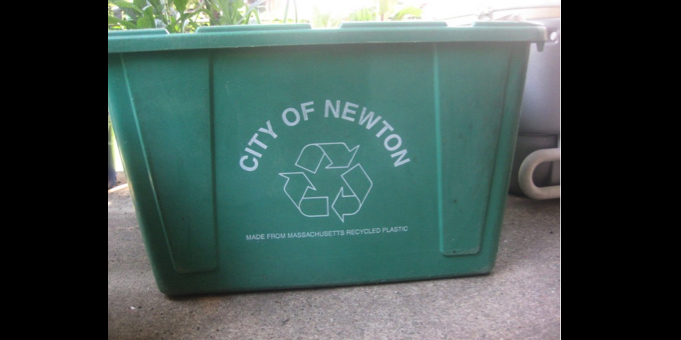During my summer internship with Green Newton, I worked with Marcia Cooper, President of Green Newton, to research and report on how well our community is doing when it comes to our trash and recycling disposal. I was surprised to learn the following information:
• The amount of trash produced each year in Newton is about 575 pounds per person. That amounts to over 18,000 tons of trash each year for the city.
• The recycling rate has been falling from around 11,000 tons in 2011 to 10,300 tons in 2015 despite an increase in households and population with residents recycling on average only around 38% of our solid waste.
• The city is currently spending $64/ton to burn our trash and $60/ton to dispose of recyclables.
• Newton sends its trash to a waste-to-energy facility (WTE), which emits a steady stream of carbon monoxide, sulfur dioxide and nitrous oxides into the air even with the best pollution control mechanisms in place. Every four tons of trash that is incinerated produces one ton of toxic ash that is sent to a landfill.
• About half of the trash being burned or buried could be recycled or reused and save in disposal costs.
Once I began to understand the impact that our trash disposal has on our environment and our city’s budget, I created a survey for Newton residents to determine how much they know about what can or cannot be recycled. About 50 visitors to Green Newton’s Farmers Market booth were asked to look at pictures of recyclable items on a chart and to check the items that they recycle and I found that we need to educate residents about what they can recycle. They also need to be reminded not to put plastic bags and styrofoam in the recycle bins.
Considering the fact that recycling conserves three to five times more energy than WTE generates, imagine how much energy could be saved if we recycled the half of our trash that is recyclable. We can all do more to achieve our city’s goal to increase recycling from the 38% that it is today to 45% by 2017.
by Jennifer Wang, Green Newton Summer Intern



Recently on Twitter